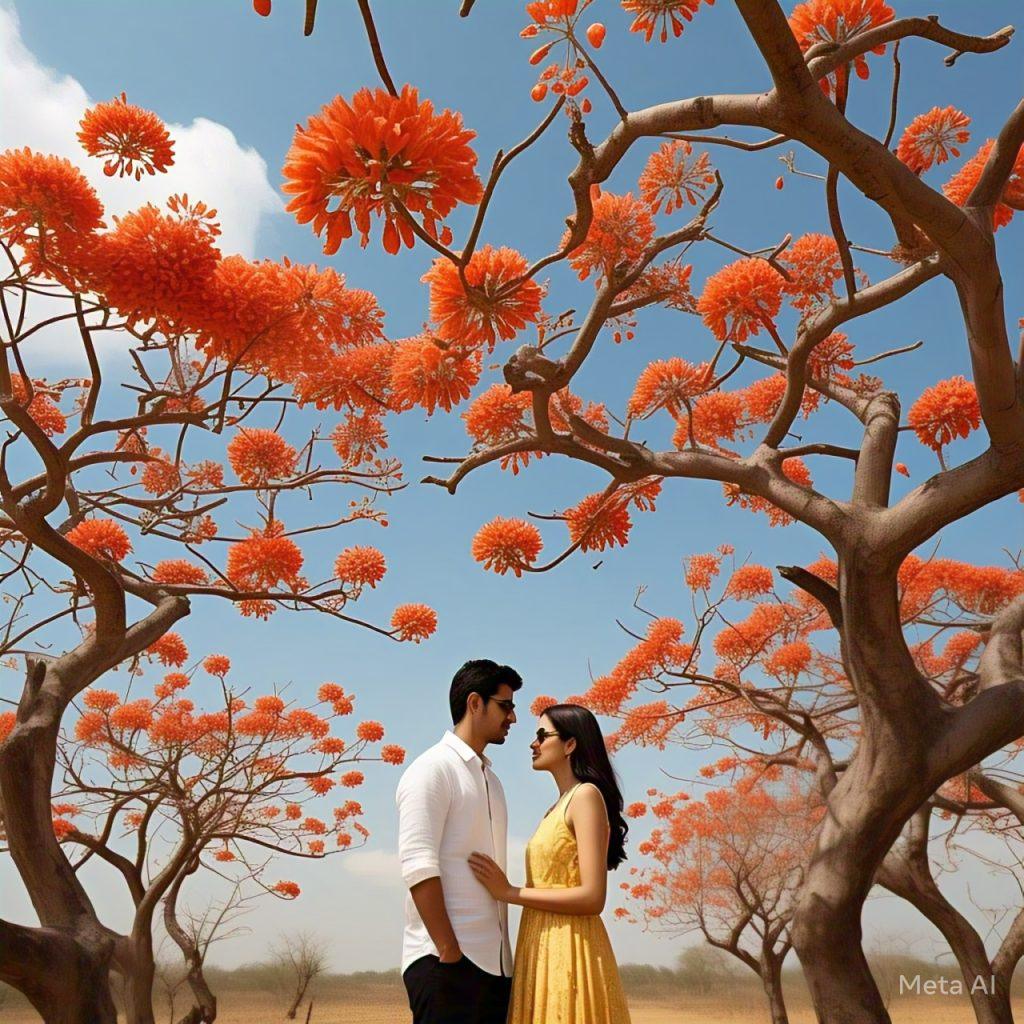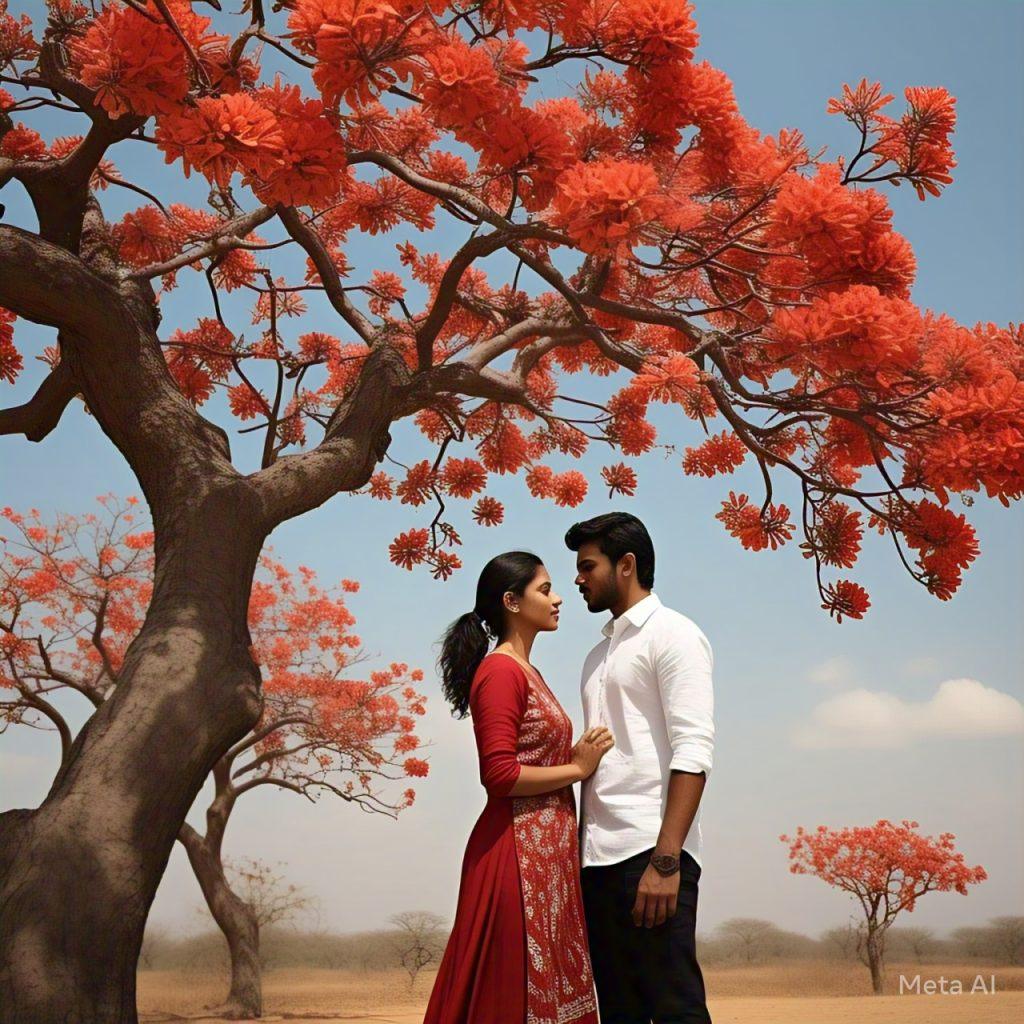Imagine a tree that erupts into flames of orange-red blossoms, lighting up the dry landscapes of India each spring. This isn’t a wildfire—it’s the breathtaking bloom of Palash (Butea monosperma), a tree as culturally significant as it is ecologically vital. Known as the Flame of the Forest, Palash, or Dhak, this tree has woven itself into the fabric of ecosystems, traditions, and modern industries. Let’s explore its story.
### **Taxonomy and Botanical Profile**
Palash (Butea monosperma) belongs to the Fabaceae (legume) family. Its scientific name honors the Scottish botanist John Stuart, Earl of Bute, while “monosperma” refers to its single-seeded pods. Standing 12–15 meters tall, it’s easily recognized by its crooked trunk, ash-colored bark, and umbrella-shaped canopy.
**Leaves:** The trifoliate leaves (three leaflets) are leathery, with a velvety underside. During summer, they fall, leaving the tree bare until its fiery blooms appear.
**Flowers:** Clusters of 15 cm-long, claw-shaped flowers blaze in hues of orange and red, attracting birds like parakeets and sunbirds.
**Fruit:** Flat, brown pods house one seed each, used traditionally for jewelry and crafts.
### **Habitat and Distribution**
This hardy tree thrives in arid and semi-arid regions across South Asia, from India and Nepal to Sri Lanka and Myanmar. It favors sandy, well-drained soils and is drought-resistant, making it a pioneer species in degraded lands. In India, it’s widespread in states like Rajasthan, Madhya Pradesh, and Jharkhand—where it’s the state flower.

### **Traditional Uses: A Pharmacy and Pantry**
For centuries, communities have harnessed Palash’s parts:
– **Medicinal:**
– Flowers: Treat inflammation, liver disorders, and infections. Ayurveda uses them in “Palash Kwath” for digestive issues.
– Gum (Kamarkas): A natural gum resin, rich in antioxidants, it’s used in tonics and sweets. Kamarkas is often used to aid postpartum recovery in women
It is believed to have properties that can support uterine health. Kamarkas Tea: Boiling of kamarkas in water with a pinch of jaggery is said to create a soothing drink that reduces pain and inflammation.
– Seeds: Crushed into pastes for skin diseases like ringworm.
– **Practical:**
– Leaves stitched into plates for festivals.
– Bark fibers for ropes; flowers for natural dyes (Holika Dahan rituals).

### **Modern Applications: From Labs to Farms**
1. **Pharmaceutical Potential:**
– Studies highlight antimicrobial and anti-diabetic properties. A 2019 *Journal of Ethnopharmacology* paper noted its flavonoids combat oxidative stress.
– Researchers at Banaras Hindu University explore its role in cancer therapy.
2. **Industry:**
– Flowers yield a yellow dye for textiles and Holi powders.
– Tannins from bark aid leather tanning.
3. **Agroforestry:** Planted to restore degraded lands and provide fodder, it’s a lifeline for marginal farmers.

### **Cultural Icon: Myths and Festivals**
In Hindu lore, the Palash is linked to Lord Vishnu. Its trifoliate leaves symbolize the Trimurti (Brahma, Vishnu, Shiva). During Holi, dried flowers are burned in bonfires, and their vibrant pigments color festivities. Tribal art in Odisha and Madhya Pradesh often features its blooms, celebrating its beauty.
### **Conservation: Challenges and Hope**
Despite resilience, *Butea* faces threats from deforestation, urbanization, and overharvesting. While not yet endangered, its decline in regions like Punjab highlights the need for action.
**Conservation Efforts:**
– Community-led reforestation in Rajasthan’s Aravalli Hills.
– Government schemes promoting its planting for soil health.
– NGOs educating on sustainable harvesting of gum and flowers.

### **Conclusion: A Tree Worth Saving**
*Butea monosperma* is a ecological cornerstone, a cultural emblem, and a scientific marvel. Its fiery blossoms remind us of nature’s brilliance and the urgency to protect it. By integrating traditional wisdom with modern conservation, we can ensure this Flame of the Forest keeps burning bright for generations.
Next time you spot its blaze of color, remember: this tree isn’t just a sight to behold—it’s a lifeline, a healer, and a storyteller. Let’s keep its story alive. 🌸🔥